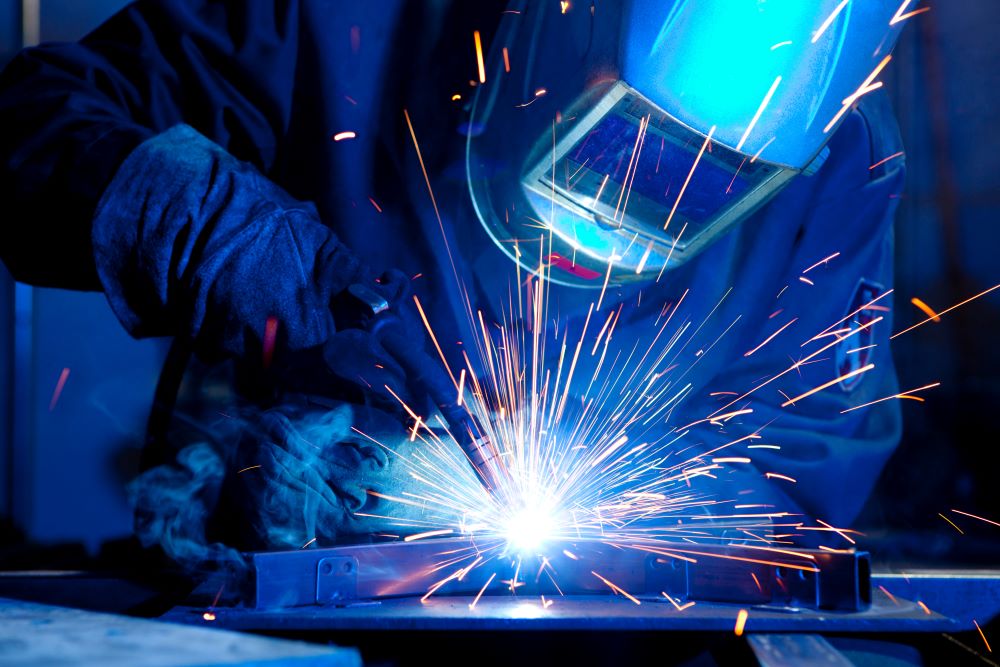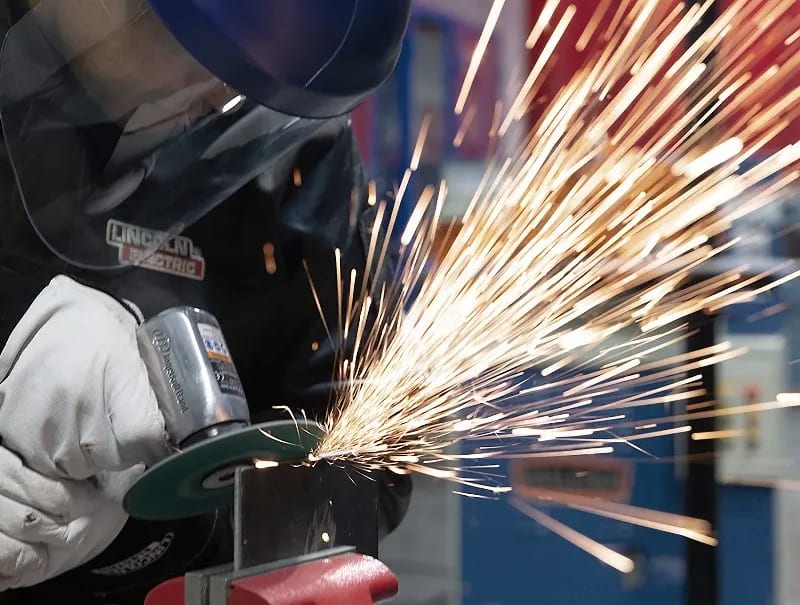Stop welding failures with advice from Montana Mobile Welding and Repair Belgrade Fabrication
Wiki Article
Usual Welding Repair Work Issues and Exactly How to Address Them Efficiently
Welding fixings frequently come across a variety of issues that can threaten the integrity of the last item. Typical troubles include poor infiltration, porosity, and imbalance, to name a few. Each issue presents unique obstacles that require specific methods for resolution. Recognizing these problems is essential for welders intending to boost their results and skills. This conversation will check out these common welding repair work problems and reliable methods to resolve them.Insufficient Penetration
Inadequate penetration takes place when the weld steel stops working to completely fuse with the base material, leading to weak joints and potential structural failings. This issue typically comes from inadequate warmth input, inaccurate electrode angle, or improper welding speed. Welders may experience poor penetration as a result of a mistake of the required criteria for a specific product density or kind. Additionally, contamination on the base product's surface can impede efficient bonding, aggravating the issue. To deal with inadequate infiltration, welders must ensure appropriate setups on their equipment and preserve a clean job surface. Normal evaluation of welds is suggested to identify any type of shortages early, permitting prompt corrections and the avoidance of endangered architectural integrity in welded settings up.Porosity
Porosity is an usual issue in bonded joints that shows up as little gas bubbles entraped within the weld steel. This issue can jeopardize the stability of the weld, causing decreased stamina and prospective failure under stress. Welding. Porosity generally emerges from contamination, dampness, or inappropriate welding strategies, which allow gases to get away right into the liquified weld swimming pool. To address porosity, welders ought to guarantee correct surface preparation, maintain a tidy workplace, and use suitable welding parameters. Additionally, selecting the right filler material and protecting gas can reduce gas entrapment. Routine evaluation and testing of welds can help recognize porosity early, guaranteeing timely rehabilitative activities are taken, consequently preserving the quality and reliability of the welded structureImbalance
Imbalance in welding can arise from numerous variables, consisting of incorrect configuration and thermal expansion. Recognizing the source is necessary for efficient resolution. Numerous modification techniques are readily available to realign components and assure architectural stability.Reasons for Imbalance
Welding misalignment frequently stems from a variety of underlying problems that can compromise structural integrity. One key reason is improper fit-up of elements prior to welding, which can cause gaps and unequal surfaces. Variants in thermal growth throughout the welding process can additionally cause distortion, especially if the products being signed up with have different coefficients of expansion. Furthermore, poor clamping and fixturing might stop working to hold parts firmly in position, bring about motion throughout welding. Inadequately maintained devices, consisting of welding machines and tools, might present variances in the weld grain, more contributing to misalignment. Driver mistake, stemming from not enough training or experience, can likewise play a substantial duty in developing misaligned welds.
Modification Techniques Readily Available
Resolving imbalance efficiently needs a combination of corrective strategies customized to the details problems available. One typical technique is using jigs or fixtures to hold parts in the right placement during welding, making sure consistent placement. Furthermore, preheating the products can help in reducing distortion and enhance fit-up. For substantial misalignment, mechanical adjustment strategies, such as utilizing hydraulic jacks or clamps, can be used to correct the setting before welding. Post-weld heat therapy might likewise be necessary to eliminate stresses created by imbalance. Careful examination and adjustment throughout the setup stage can prevent imbalance issues from coming to be significant problems, advertising a smoother welding procedure and boosting general architectural stability.Distortion
Distortion is a typical difficulty in welding that can emerge from different variables, consisting of unequal cooling and heating. Understanding the causes of distortion is crucial for applying effective avoidance techniques. Addressing this issue not only improves structural integrity but likewise improves the general quality of the weld.Root causes of Distortion
When based on the extreme warmth of welding, products frequently undergo adjustments that can bring about distortion. This phenomenon mainly emerges from thermal growth and tightening throughout the welding procedure. As the weld area warms up, the product expands; upon air conditioning, it acquires, which can develop internal stresses. Additionally, irregular heating throughout a workpiece can aggravate these stresses, causing warping or bending. The sort of product additionally plays a significant duty; metals with varying thermal conductivity and coefficients of growth may respond in a different way, leading to uncertain distortions. Bad joint layout and poor fixturing can contribute to imbalance throughout welding, raising the chance of distortion. Comprehending these causes is important for efficient welding repair service and avoidance strategies.Avoidance Techniques
Efficient prevention strategies for distortion during welding concentrate on managing heat input and guaranteeing proper joint style. Preserving a constant warm input assists to reduce thermal growth and contraction, which can bring about distortion. Making use of strategies such as pre-heating the workpiece can also decrease the temperature slope, advertising consistent home heating. Furthermore, picking proper joint designs, such as T-joints or lap joints, can improve stability and minimize stress focus. Carrying out correct fixturing to safeguard the workpieces in position better help in preserving placement throughout the welding procedure. Staggered welding series can disperse warm much more equally, preventing local distortion. By applying these methods, welders can significantly decrease the likelihood of distortion and enhance the general high quality of their welds.Splitting
Cracking is a typical concern encountered in welding repair work, frequently resulting from various aspects such as improper air conditioning prices, material option, or insufficient joint preparation. The occurrence of fractures can substantially endanger the integrity of the weld, leading to potential failures throughout procedure. To address this issue, welders have to first examine the origin, making certain that products work and appropriately chosen for the certain application. Furthermore, controlling the cooling rate during the welding process is important; fast air conditioning can induce stress and anxiety and cause breaking. Correct joint design and prep work also add to decreasing the risk. Applying these methods can enhance weld quality and resilience, ultimately minimizing the possibility of cracking in ended up weldments.
Insufficient Combination
A substantial issue in welding repair work is incomplete blend, which happens when the weld metal does not effectively bond with the base product or previous weld passes - Welding. This problem can cause weak points in the joint, possibly endangering the stability of the welded framework. Factors adding to insufficient combination include inadequate warmth input, improper welding strategy, and contamination of the surface areas being signed up with. To resolve this problem effectively, welders ought to ensure check my blog appropriate pre-weld cleansing and surface area preparation, as well as adjust their welding parameters to accomplish sufficient penetration and blend. Normal assessment during the welding procedure can additionally help recognize incomplete blend early, permitting for prompt corrective steps to improve the total quality of the weldOverheating
While welding repair services can enhance structural honesty, overheating provides a considerable obstacle that can bring about product destruction. Excessive warmth throughout welding can modify the mechanical residential or commercial properties of steels, resulting in reduced stamina, boosted brittleness, and warping. This sensation is especially crucial in high-stress applications where structural integrity is paramount. Determining overheating can include aesthetic assessments for discoloration or distortion, in addition to monitoring temperature during the welding procedure. To minimize the threats connected with overheating, welders must utilize proper methods, other such as controlling warm input, readjusting traveling rate, and utilizing ideal filler products. Additionally, implementing pre- and post-weld warmth therapies can assist bring back material properties and enhance the overall top quality of the repair work, ensuring long-term performance and safety and security.Often Asked Inquiries
What Are the Common Signs of a Welding Flaw?
Exactly How Can I Test My Welds for Quality?
To check welds for quality, one can utilize visual assessments, ultrasonic testing, and radiographic techniques. Each strategy ensures architectural stability, determines problems, and verifies adherence to specified criteria, eventually improving the integrity of the welded joints.What Security Precautions Should I Take While Welding?
When welding, one ought to prioritize security by putting on appropriate individual safety equipment, guaranteeing proper ventilation, securing combustible products away, preserving a clean work area, and understanding surroundings to avoid accidents and injuries.Can I Repair a Weld Without Redesigning the Entire Joint?
Repairing a weld without redesigning the entire joint is feasible, depending upon the damages (Montana Mobile Welding and Repair Welding). Techniques such as grinding, including filler product, or using a welding process can properly attend to details problems while maintaining the surrounding frameworkwhy not try here
What Devices Are Important for Reliable Welding Repairs?
Important tools for efficient welding repair services consist of a welding equipment, cable brush, mill, safety gear, clamps, and filler materials. Each device plays an important role in ensuring quality and security throughout the repair work procedure. Porosity usually develops from contamination, moisture, or incorrect welding strategies, which permit gases to leave into the liquified weld swimming pool. Poorly kept equipment, consisting of welding machines and tools, may present inconsistencies in the weld grain, further contributing to imbalance. When subjected to the extreme warmth of welding, products often undergo changes that can lead to distortion. Fracturing is a typical problem run into in welding repairs, typically resulting from numerous aspects such as improper cooling rates, material selection, or poor joint prep work. A considerable problem in welding fixings is insufficient fusion, which occurs when the weld steel does not sufficiently bond with the base material or previous weld passes.Report this wiki page